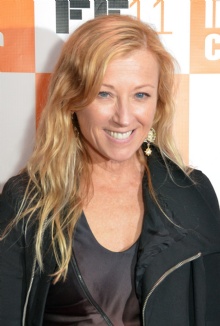Overview
Cindy Sherman’s "Clowns" (2003) is a series of large-scale color photographs in which the artist transforms herself into a parade of clowns, cheerful, sinister, bedraggled, glamorous, and broken, using makeup, costume, and digital postproduction. The project amplifies the paradox at the heart of Sherman's practice: self-portraiture that dissolves the self. Clowning, with its codified masks and exaggerated gestures, becomes a laboratory for testing how persona, performance, and projection construct identity. The images oscillate between slapstick spectacle and psychological unease, revealing the clown as both entertainer and vessel of anxiety.
Visual Style and Technique
Saturated color, razor-sharp detail, and flamboyant costuming dominate the series. Sherman's faces are painted into masks, white greasepaint, smeared rouge, drawn-on tears, bulbous noses, fixed grins, pushing expression into caricature that reads as both readable and opaque. Wigs and ruffs, polka dots and sequins, balloons and props collide with vivid digital backdrops: fireworks, lurid skies, candy stripes, theatrical curtains, desolate fields. The chromogenic prints are often large, enveloping the viewer in a field of pure artifice. Digital compositing intensifies the dissonance between figure and ground, so the clowns appear slightly unmoored from their environments, as if pasted into a world too loud to be credible. That friction, between tactile makeup and immaterial pixels, underscores the performance of reality itself.
Themes and Emotional Range
Clowns concentrate extremes of feeling, and Sherman mines that spectrum. Smiles stretch past comfort into rictus; merriment curdles into menace; pathos leaks through the seams of glee. The series makes visible how social roles demand exaggerated scripts: the entertainer must project delight regardless of inner weather. Yet traces of vulnerability persist, tired eyes under mascara, a slumped shoulder, a hand clutching a prop too tightly. Comedy and tragedy are not opposites but overlapping states, and the clown’s face functions like a mask that both hides and advertises emotion. Archetypes from commedia dell’arte and silent cinema shadow the pictures: Pierrot’s wistfulness, Harlequin’s mischief, the auguste’s chaos. At the same time, the characters slide across gender and age, blurring categories and teasing apart the idea that identity is stable or singular.
Context within Sherman's Practice
By the early 2000s Sherman had fully embraced digital manipulation, and "Clowns" marks a turn toward hyperbolic color and constructed backdrops that extend the studio into a synthetic theater. The series builds on decades of shape-shifting self-portraiture, from the "Untitled Film Stills" through the horror-inflected pictures of the 1990s, while swapping cinematic references for the unruly lexicon of the circus. The clown becomes a meta-artist: a performer whose job is performance itself. Critics have also read the garish buoyancy against the cultural anxieties of the early 2000s, noting how enforced cheer can feel like denial, and how spectacle can be both balm and camouflage.
Reception and Impact
"Clowns" has been widely exhibited and collected, noted for both its visual bravura and its unnerving psychological depth. Viewers report a double pull: immediate attraction to color and pattern, followed by a lingering unease that complicates the pleasure of looking. The series crystallizes themes that would surface again in later bodies of work, the negotiation of aging, social roles, and display in the "society portraits", for example, while standing as a vivid thesis on the mask as a modern condition. Sherman's clowns refuse to resolve into simple satire or simple empathy; their power lies in ambiguity, in the way the painted smile keeps slipping, inviting the audience to recognize performance everywhere they look.
Clowns
A series in which Sherman portrays herself as painted, unsettling clowns; the works examine identity, performance and the grotesque while referencing popular culture and theatrical traditions.
Author: Cindy Sherman
 Cindy Sherman's biography and quotes, detailing her groundbreaking photography, artistic development, and influential exhibitions.
Cindy Sherman's biography and quotes, detailing her groundbreaking photography, artistic development, and influential exhibitions.
More about Cindy Sherman
 Cindy Sherman's biography and quotes, detailing her groundbreaking photography, artistic development, and influential exhibitions.
Cindy Sherman's biography and quotes, detailing her groundbreaking photography, artistic development, and influential exhibitions.